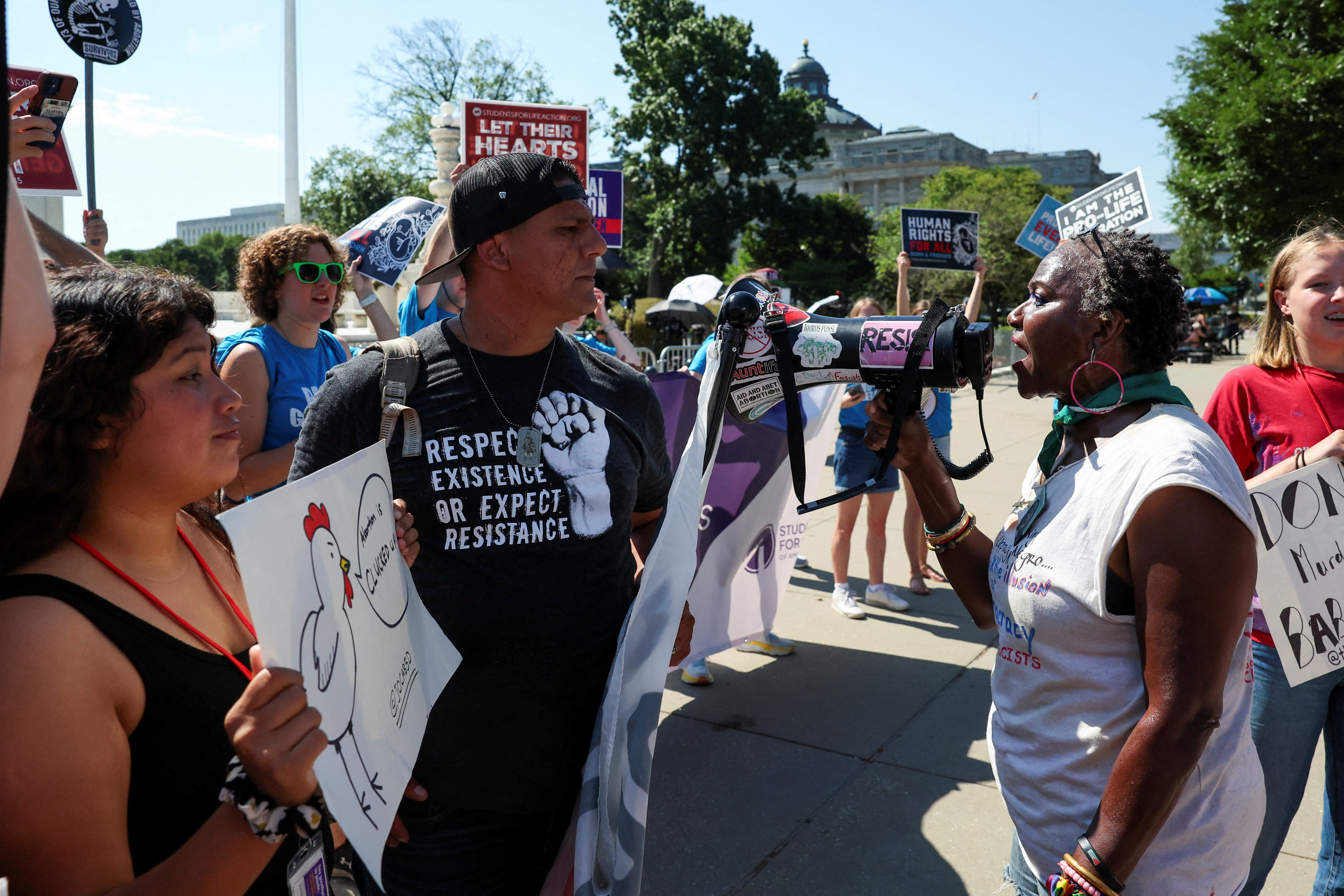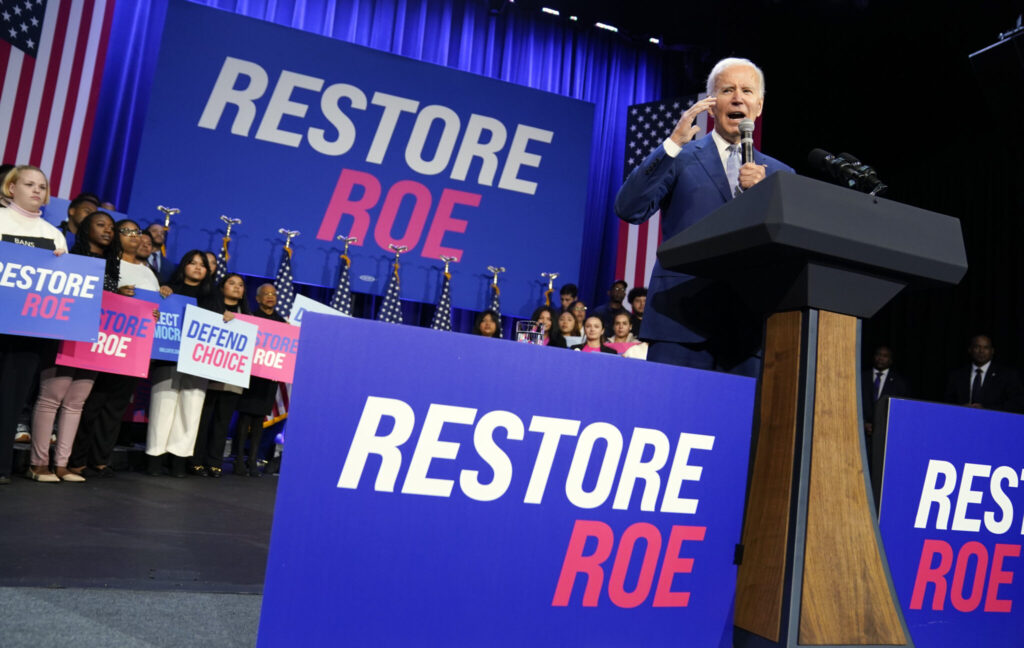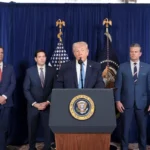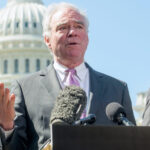In the two years since the U.S. Supreme Court overturned women’s constitutional right to abortion, political contributions aimed at protecting abortion rights have far outstripped those to support anti-abortion causes. In the 2023-2024 election cycle leading up to the Nov. 5 vote, pro-abortion rights interests have given $3.37 million to federal candidates, political parties, political action committees (PACs) and outside groups, compared to about $273,000 from anti-abortion interests, according to data from OpenSecrets, which tracks money in politics.
Quick Read
- In the two years since the U.S. Supreme Court overturned women’s constitutional right to abortion, political contributions aimed at protecting abortion rights have far outstripped those supporting anti-abortion causes.
- For the 2023-2024 election cycle leading up to the Nov. 5 vote, pro-abortion rights interests have given $3.37 million to federal candidates, political parties, PACs, and outside groups, compared to about $273,000 from anti-abortion interests, according to OpenSecrets.
- The high level of spending by pro-abortion rights interests is expected to boost the campaigns of Democratic candidates, including President Joe Biden, who has made protecting abortion rights a central part of his reelection campaign.
- The Supreme Court, with a 6-3 conservative majority, overturned Roe v. Wade in 2022, leading 14 states to enact measures banning or sharply restricting abortion.
- Super PACs received 65.8% of contributions from those backing abortion rights in this election cycle, according to Reuters analysis of OpenSecrets data.
- Republican candidates and party committees received about 75.9% of contributions from anti-abortion rights interests.
- So far this election cycle, PACs and super PACs allied with anti-abortion causes have raised $3.54 million, while abortion rights groups have raised $15.3 million, OpenSecrets data showed.
- “The balance of spending between pro-abortion rights and anti-abortion rights groups always reflected the fact that there are more people who support abortion rights than who don’t,” said Mary Ziegler, a law professor at University of California, Davis.
- The 2020 election cycle saw record contributions, with abortion rights interests contributing $11.33 million and anti-abortion interests contributing $6.41 million.
- With more than four months before the November election, it’s uncertain if contributions from both sides will surpass those of the 2020 cycle.
- The impact of political contributions on election outcomes is complex, with voters prioritizing various issues.
- During Trump’s presidency, he appointed a third of the current Supreme Court members, shaping its conservative bloc.
- Trump’s campaign supports states’ rights to decide on abortion, exceptions for rape, incest, and life of the mother, and protecting access to contraception and in vitro fertilization.
- Two top contributors are Planned Parenthood, which advocates for abortion rights, and Susan B. Anthony Pro-Life America, which opposes abortion rights.
- Planned Parenthood has contributed $2.53 million, mostly to liberal groups and Democratic candidates, while Susan B. Anthony Pro-Life America has contributed about $92,600, almost entirely to Republican candidates and their party.
The Associated Press has the story:
Abortion rights interests plow money into US election races
Newslooks- NEW YORK, (AP)
In the two years since the U.S. Supreme Court overturned women’s constitutional right to abortion, political contributions aimed at protecting abortion rights have far outstripped those to support anti-abortion causes.
In the 2023-2024 election cycle leading up to the Nov. 5 vote, pro-abortion rights interests have given $3.37 million to federal candidates, political parties, political action committees (PACs) and outside groups, compared to about $273,000 from anti-abortion interests, according to data from OpenSecrets, which tracks money in politics.
The level of spendingby pro-abortion rights interests is expected to offer a financial boost to the campaigns of some Democratic candidates including U.S. President Joe Biden, who has made protecting abortion rights a central part of his campaign message for reelection.
The Supreme Court, which has a 6-3 conservative majority, in 2022 overturned its 1973 Roe v. Wade precedent that had legalized abortion nationwide, prompting 14 states to since enact measures banning or sharply restricting the procedure.

Groups like super PACs received 65.8% of contributions from those backing abortion rights in this election cycle, according to a Reuters analysis of OpenSecrets data.
Republican candidates and party committees got the bulk – about 75.9% – of contributions from anti-abortion rights interests.
PACs are typically set up to gather funds for candidates or political causes. They differ from outside money groups like super PACs, which can receive donations of unlimited size but cannot coordinate with campaigns directly. So far this election cycle, PACs and super PACs allied with anti-abortion causes have raised $3.54 million, while abortion rights groups have raised $15.3 million, OpenSecrets data showed.
“The balance of spending between pro-abortion rights and anti-abortion rights groups always reflected the fact that there are more people who support abortion rights than who don’t,” said Mary Ziegler, a law professor at University of California, Davis.
Ziegler said she would not be surprised if political donations to support or oppose abortion rights rose for the 2024 election cycle compared to the 2020 election cycle.
2020 ELECTION CYCLE SET RECORDS
The sums reported so far are dwarfed by those in the 2020 election cycle in which abortion rights interests poured in $11.33 million in political contributions, with spending in the 2022 midterm election cycle coming in second with $10.67 million in contributions, OpenSecrets data showed.
Contributions from anti-abortion interests totaled $6.41 million in the 2020 cycle, and $2.7 million in the 2022 midterm cycle, during which the outcomes for ballot measures and competitive races seemed to suggest that voters were eager to protect abortion access at the state level.
With more than four months to go before the November election, it remains to be seen whether contributions this election cycle from abortion rights and anti-abortion causes will outstrip those in the 2020 cycle, when Biden beat the incumbent Donald Trump, a Republican.
The impact of political contributions on race outcomes is complicated, Ziegler said, as voters have various priorities at the ballot box.
“You can’t dismiss the importance of it, but it’s not like (more contributions) definitely means ballot initiatives are going to pass, Democrats are going to win, etc. It’s not that simple,” Ziegler said.
During Trump’s term as president, which started in 2017, he appointed a third of the current members of the Supreme Court and half of its conservative bloc, with all three of his picks coming from a list compiled by conservative legal activists.
Trump’s campaign earlier this month said he supports the rights of states to make decisions on abortion, supports exceptions for abortions in cases of rape, incest and life of the mother, and also supports protecting access to contraception and in vitro fertilization.
Two of the top contributors to candidates and groups are Planned Parenthood – which advocates for abortion rights – and Susan B. Anthony Pro-Life America – which lobbies against abortion rights.
So far this election cycle, Planned Parenthood has contributed $2.53 million, most of that to liberal groups, the Democratic party and its candidates.
Susan B. Anthony Pro-Life America has contributed about $92,600, almost all of it to Republican candidates and their party.







